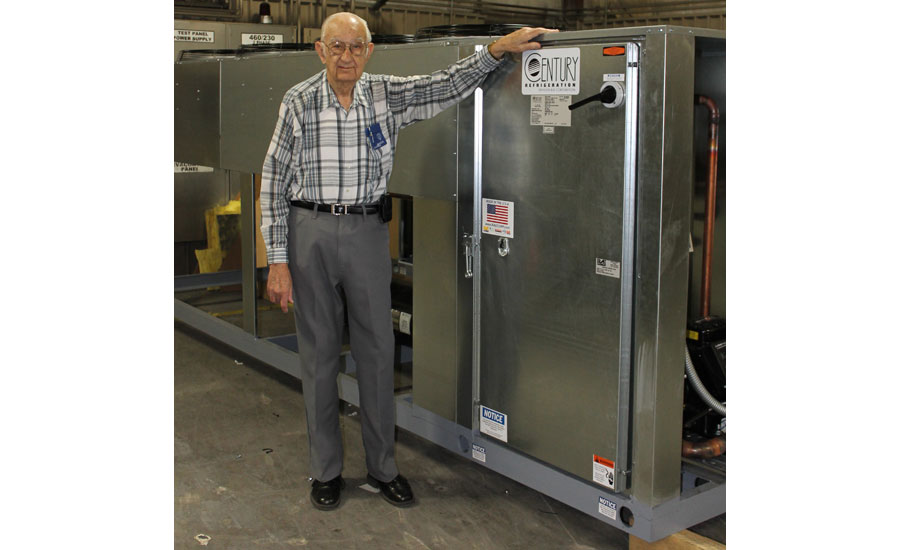EDITOR’S NOTE: This story was shared with us by RAE Corp., Pryor, Oklahoma, which specializes in the design and production of engineered heating, cooling, and refrigeration systems. RAE Corp. manufactures products in four divisions: Century Refrigeration, RAE Coils, Refrigeration Systems, and Technical Systems.
Looking back on a refrigeration technology career stretching over six decades, Lynn Dison, an applications engineer with RAE Corp., said that he knew from the very start of it all that he would be at home in the industry for his entire career. Dison began working as a manufacturing floater with Recold Refrigeration Engineering in Los Angeles at age 21 in 1955 after serving in the U.S. Navy for three years. He said that he immediately became interested in the projects assigned to him and knew that he would make a career in refrigeration technology.
A graduate of Loyola University and Rio Hondo College, Dison spent the first 25 years of his career building a name for himself as an expert refrigeration engineer. After leaving Recold Refrigeration, Dison also worked at the Lanphere Refrigeration Co., Huntington Park, California; Russell Coil, Brea, California; and Colmac Coil, Colville, Washington. In 1980, having heard of Dison’s reputation for engineering excellence, Jerry Salcher Sr., then vice president of Technical Systems Inc., invited Dison to visit the company’s headquarters in Pryor, Oklahoma. Dison began working for TSI (which would later become RAE Corp.) soon thereafter, and has continued to work as part of the RAE team ever since.
When asked, Dison said that the best year of his 61-year career so far was 1984, when RAE first launched a then-new brand called Century Refrigeration. Dison became the applications engineer for Century, and many people within the company credit the growth of the division to him.
Here are some comments Dison had about his experiences and insight into the industry.
Question: What are the most striking changes to refrigeration technology you have noticed over your 61-year career?
Dison: Over the years, there have been a lot of changes, mostly design changes to provide more energy efficiency in evaporator coils and higher efficiency motors. One notable change I’d like to mention is the introduction of hot-gas defrost systems. Manufacturing and marketing a suitable hot-gas defrost system for a reasonable price was a problem for many years, a problem that wasn’t shared by rack systems, for instance.
Question: Do you have any single product that stands out in your mind as being, or having been, particularly innovative when it was introduced?
Dison: One of the refrigeration systems that was marketed years ago that I thought was intriguing was called the Plug Unit. This was a complete refrigeration system in one piece. To install it, you just cut a square hole in the wall, stuck the evaporator through the hole and plugged it in — the ultimate in ease of installation.
Question: What insight do you have to share about the industry and its manufacturing and design practices today?
Dison: For one thing, nearly all of the refrigeration manufacturers in this day and age redesign systems to cut cost. This can have great cost benefits for the customer, but can also have design trade-offs. Additionally, controls for the refrigeration industry have come a long way in 61 years. In the 1950s, your refrigeration controls consisted of a wall thermostat and a defrost clock. Today, you can purchase a control that will monitor and adjust the entire system, which is something that we could only dream of 61 years ago.
Thanks to Lynn Dison for sharing his insights into the industry over the last 61 years. Dison and others of his generation are still present in the industry, helping to train the next generation of refrigeration engineering experts, and using the knowledge of the history of the industry to inform the refrigeration technology designs of the future.
Publication date: 4/4/2016
Want more HVAC industry news and information? Join The NEWS on Facebook, Twitter, and LinkedIn today!


Report Abusive Comment